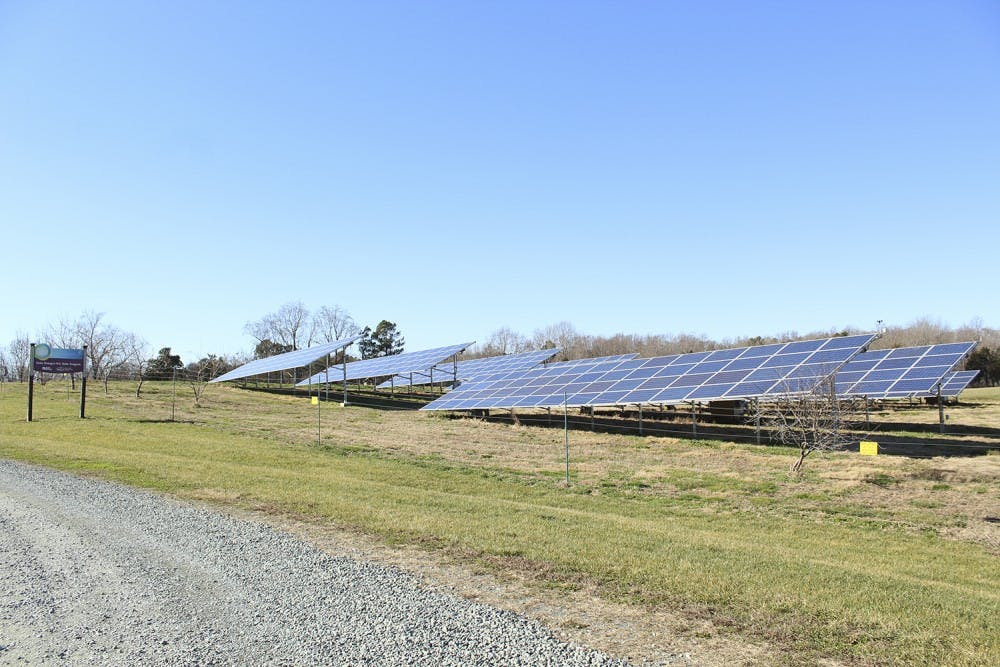Solar energy production growth in North Carolina is among the fastest in the country, according to an Environment North Carolina report, and it shows no signs of slowing down.
The report ranked North Carolina as third in the nation for solar electricity production growth between 2008 and 2017, behind Arizona and California. In 2008, North Carolina's solar electricity production was 7 GWh. By 2017, it increased to 5,783 GWh. Although once a small market in the state, countless solar energy companies have moved in and made North Carolina one of the biggest solar energy leaders in the nation.
This growth arose from a combination of the expansion of companies like the Triangle-based Strata Solar, a variety of government factors and market forces that led to a state-wide explosion of solar energy production.
Daniel Parker, market research analyst at the North Carolina Sustainable Energy Association, said the source of solar energy’s rise can be traced back to the 1970s oil crisis and the passage of new legislation in response to it.
“In 1978, Congress passed the Public Utility Regulatory Policies Act,” he said. “PURPA did many things, but for our purposes, it defined ‘small power production facilities.’ These are under 80 megawatts in size, and they are fueled primarily by a renewable energy source.”
PURPA left the details of its implementation up to each state, according to Parker.
“North Carolina was unique in that the utilities commission decided that the small power producers, if they had a generating capacity under 5 megawatts, would receive a standard contract from the utility for 15 years at an avoided cost,” he said. “That was unique, too, because it allowed people to develop a renewable energy system and have a guaranteed source of income for 15 years at a set price.”
Brian O’Hara, senior vice president of strategy and government affairs at Strata Solar, said it was Strata that first used PURPA to put North Carolina on the map for solar in the United States back in 2010.
“At the time, there were a number of policies and incentives in place that helped kickstart that industry, but it was really Strata that cracked the code to figure out how to make the economics work for utility-scale solar,” he said.




